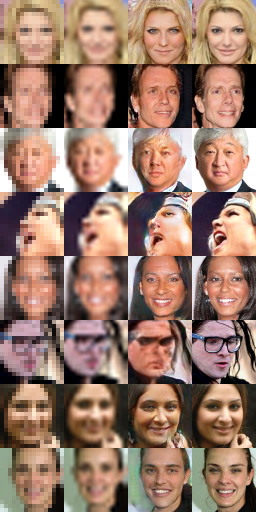Face Super-Resolution Through Wasserstein GANs
Generative adversarial networks (GANs) have received a tremendous amount of attention in the past few years, and have inspired applications addressing a wide range of problems. Despite its great potential, GANs are difficult to train. Recently, a series of papers (Arjovsky & Bottou, 2017a; Arjovsky et al. 2017b; and Gulrajani et al. 2017) proposed using Wasserstein distance as the training objective and promised easy, stable GAN training across architectures with minimal hyperparameter tuning. In this paper, we compare the performance of Wasserstein distance with other training objectives on a variety of GAN architectures in the context of single image super-resolution. Our results agree that Wasserstein GAN with gradient penalty (WGAN-GP) provides stable and converging GAN training and that Wasserstein distance is an effective metric to gauge training progress.
PDF Abstract


